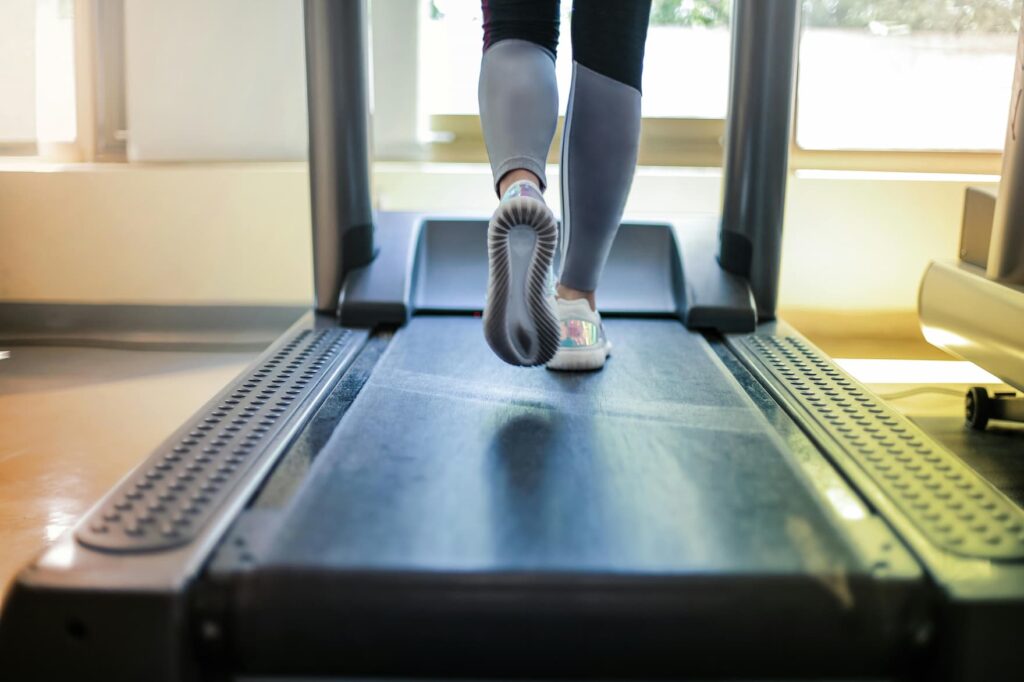Runners will do almost anything to continue running. As a physical therapist, you quickly learn that the worst thing you can do is tell a runner they shouldn’t run. Most folks who identify as runners don’t simply run because of fitness; they run for mental health, a sense of freedom, alone time, autonomy, and run with friends for community; it’s part of who they are and how they identify themselves.
When a runner tells me they are leaking urine, I quickly explain that urinary incontinence is the body’s way of telling us that there is an underlying dysfunction: somewhere, with impact, the muscles, connective tissue, and other mechanisms such as breath, are not working the way they should to maintain continence.
Then we go on a fun hunt for clues together:
- When do you start leaking?
- Is it right away or when you are a certain miles in? (That could indicate that muscular fatigue in certain groups kicks in at that point.)
- How much is the leaking?
- Is it always present or only sometimes (like with a mile time trial)?
- Does your choice of shoes or the type of surface you are running on change things?
These are some examples of questions I delve into, as well as a full evaluation of muscle groups, strength, vertical versus horizontal jumps, running gait analysis, core and breath dynamics, and so much more. I love working with runners because of four things:
1) I am a runner, and I “get it”
2) Runners are (often) stubborn (it’s me)
3) Runners are extremely motivated to get back to running
4) I love physics

Running, like any movement, is a complex series of biomechanics. When the foot hits the ground (ground strike), the many bones of the foot adapt to the surface and react to the force of impact (referred to as ground reaction force), sending that force to be dispersed and diluted through the body.
This explains why certain gait mechanics, like heel strike, can cause the force to go to the knee, causing knee pain. The knee itself is one of the body’s greatest levers, with the kneecap (patella) providing a level arm for the quads muscles, allowing them to create the most perfect tension to extend the leg or allow bending.
Physics and biomechanics also explain why poor hip abductor and/or glute strength can lead to poor control of the thigh (aka femur), which can lead to knee pain with impact. I say all this to make the point that a good gait analysis and movement evaluation can give us a lot of clues and information about where the pain or dysfunction is coming from. Foot pain can be caused by the foot, knee, hips, or even the thoracic spine.
So, when a runner is experiencing leaking, simply prescribing kegels is not the answer. We must address the entire biomechanical chain and see where that impact and forces are challenging the tissues.
In many cases, if a runner or athlete has had any kind of tearing or scar tissue at the pelvic floor, perineum, or abdomen, such as a c-section or surgical scar, that scar tissue can “block” the load of the force from being transferred and dispersed throughout the body to best absorb the impact.
Fascia provides a complex series of highways in our body to allow force to travel upon, and one area of very thick fascia where load is transferred across at heel strike (whether running or walking) is at the perineum. You clunk that up with some scar tissue—even scar tissue that is not painful— and it sends that force on the path of less resistance.
These minute biomechanical changes certainly won’t play a huge role in day-to-day movements in most cases; but when you are doing the same, repetitive movement, such as running miles and miles each week, the body’s compensations can lead to repetitive movement injuries (hip pain, poor alignment, gait changes, etc.)
Running is high impact, and leaking a little urine is your body’s way of saying something isn’t quite right. Ignoring leaking over time, for any athlete, means you are ignoring a weakness in the system, which in this case could lead to more leaking, pelvic organ prolapse (POP), pain, or breakdown in other systems as they compensate (such as deep hip pain caused by the obturator internus overworking.)
Clamshells and kegels aren’t always the answer. At each Indigo Physiotherapy location in Maryland and Virginia, every single one of our Doctors of Physical Therapy has been extensively trained to evaluate runners and athletes— whether you like to run 3 miles a week or 30—and find the root of the dysfunction, leading you to run better, more functionally, faster, and longer, as well as preventing issues that can take you out of the race in the future.

As we ramp up for this fall’s marathon season, I encourage you—even if you are not leaking (yes, I said it!)— to make an appointment with one of our pelvic floor specialists at any one of our locations to integrate this key, and often overlooked, part of running training. Remember, pelvic floor physical therapists are experts on the entire core: breath, abdominals, pelvis, hips, and up and down the chain — all of which factor into a good, strong run.
Stay the course, and enjoy this and all of your future running seasons in good health.
Dr. Sam







